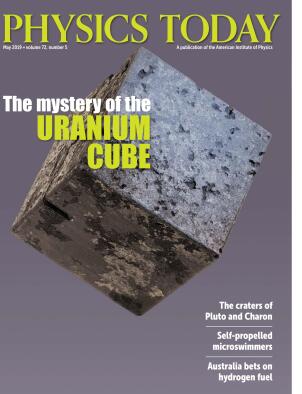Tunneling nanotubes connect diseases
DOI: 10.1063/PT.3.4212
Cells in living organisms communicate with each other in a variety of ways. One mechanism was discovered just 15 years ago: tunneling nanotubes, membrane-sheathed channels of cytoplasm that can connect individual cells separated by distances of 100 µm or more. The interconnections fall into two general classes. Thin nanotubes, with diameters less than about 700 nm, contain microfilaments of the cytoskeletal protein actin; thick nanotubes hold microfilaments and microtubules. Depending on the type, tunneling nanotubes can shuttle a variety of cargo, such as genetic material, organelles, pathogens, and misfolded proteins, between the connected cells. This

Elucidating the role of macrophages was part of a study by researchers in Argentina and France seeking to understand why tuberculosis (TB) and HIV make such a common and dangerous combination. The World Health Organization reports that of the estimated 1.6 million people who died worldwide from TB in 2017, nearly a quarter were HIV-positive. The suppressed immune response in HIV sufferers can reactivate latent TB infections. But TB infections also exacerbate HIV infections. Macrophages act as host cells for both pathogens. The French–Argentinian collaboration found that TB-associated changes in the microenvironment promote the formation of tunneling nanotubes between macrophages. Through those conduits the virus rapidly spreads and multiplies. (S. Souriant et al., Cell Rep. 26, 3586, 2019. Image © Shanti Souriant & Renaud Poincloux, CNRS/Université Toulouse III-Paul Sabatier.)
To submit candidate images for Back Scatter visit http://contact.physicstoday.org
More about the Authors
Richard J. Fitzgerald. rfitzger@aip.org





